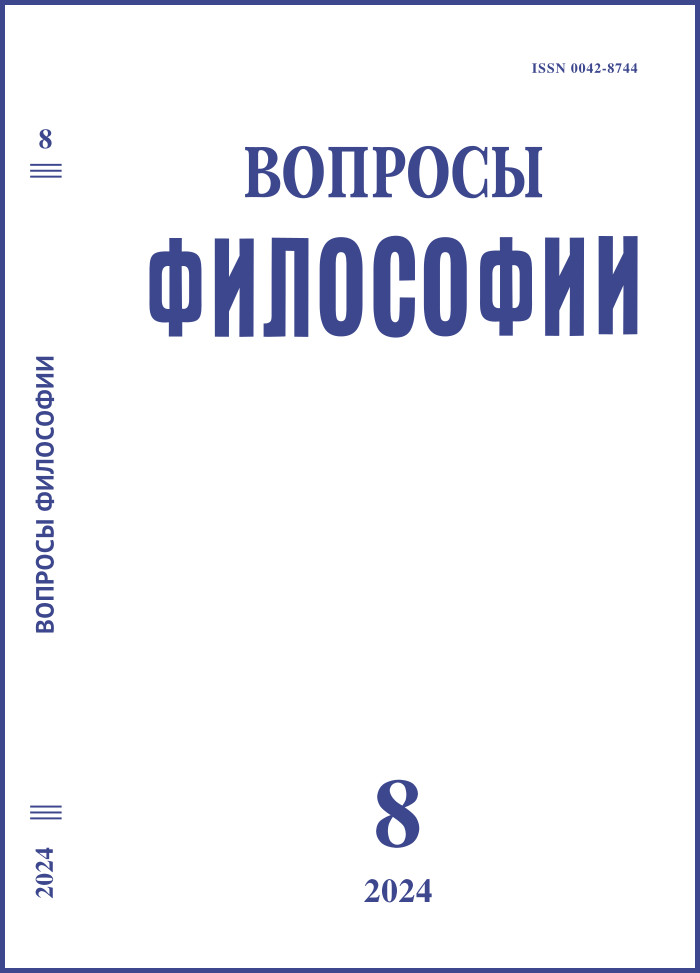Culture – Sign – Meaning: on the Nature and the Structure of Culture and of Sign
DOI:
https://doi.org/10.21146/0042-8744-2024-8-60-71Keywords:
semiotics, theory of culture, theory of social activity, culture, sign, sign relation, ontological modi of the sign, conceptual structures, sense, conceptual meaning, Moscow methodological circleAbstract
The article examines the concept of culture as a paradigmatic structure that defines the variety of possible forms of social life, activity, and behavior in a certain community. It examines the structure and nature of the sign and its place in culture. The author sets this concept of culture and ideas about the structure of the sign, starting from some of F. Saussure’s ideas. He accepts Saussure’s distinction between language and speech within “linguistic activity”, but in the language itself he also distinguishes two areas of existence: language as a paradigmatic structure of a single subject and language as a paradigmatic system existing at the community level. As a result, the author sees not two, but three
areas of manifestation in “language activity”. He identifies similar three areas in any semiotic activity and in activity in general. At the same time, in the course of generalization in the series “linguistic activity – sign activity – activity”, the social paradigmatic aspect of these activities is also generalized from language to the sign system and culture as a whole. Since language in public form, and language in individual form, and speech have the word as a basic structural unit, then we can talk about three ontological forms (modi) of the word: in public language, in individual language, in speech. The author identifies similar three ontological modi for an arbitrary sign. Taking as a basis the binary structure of an abstract sign (the plan of expression and the plan of content associated with each other) and the idea of the three ontological modi of the sign, we obtain a triangular prism as an ontological scheme of the sign, where the nodes of the prism correspond to various aspects of the sign, three vertical edges – three ontological modi of the sign, the upper face – the plan of expression (syntax), the bottom face – the plan of content (semantics). Based on the obtained ontological scheme of the sign, the author interprets the semiotic representations of some alternative research programs

